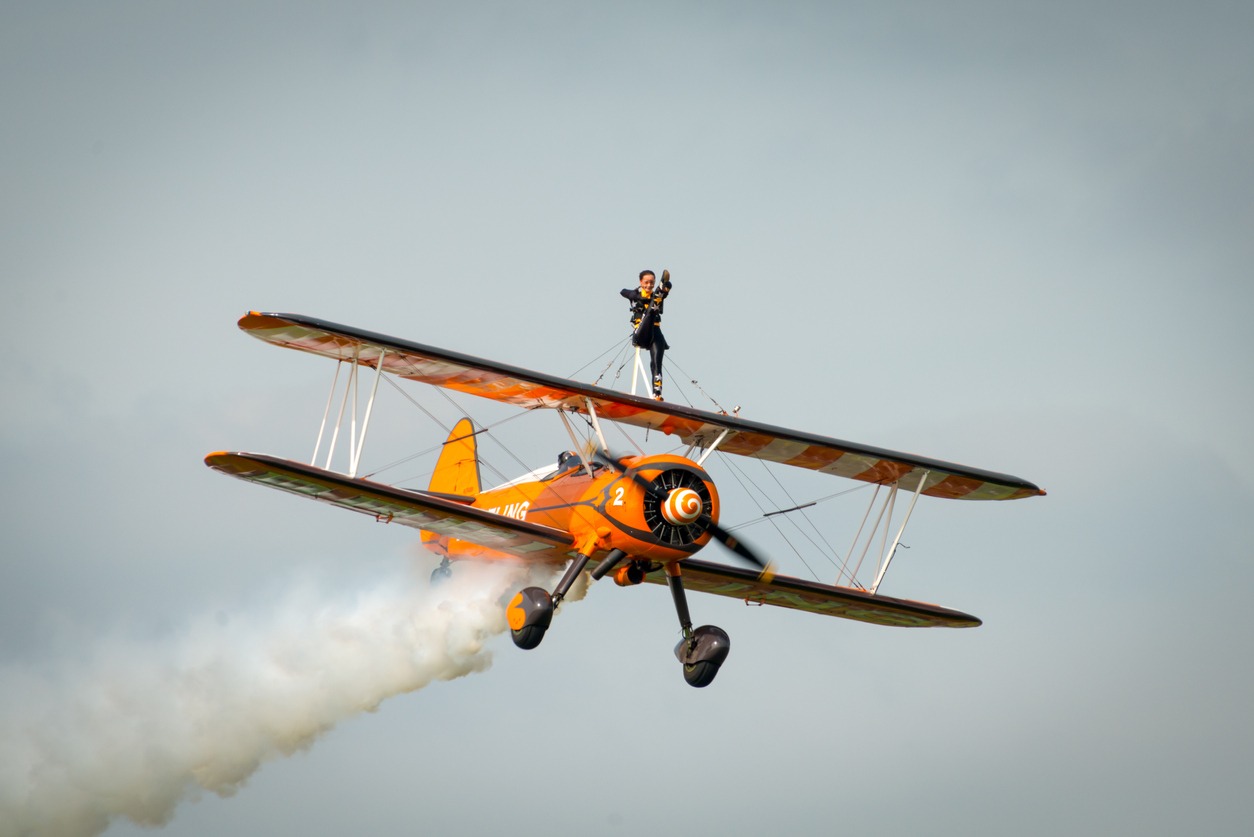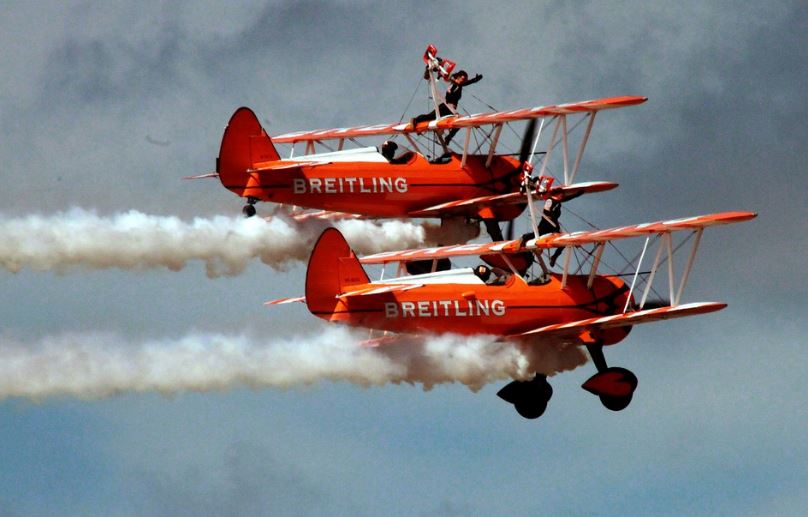Wing walking is the term used to describe the act of moving or walking on an airplane’s wings. It first started in the 1920s at air shows. The shenanigans really began before in-flight mechanical adjustments and corrections and happened after a demonstration of the planes’ stability and balance. These original Wing Walkers became well-known for their daring exploits. Wing Walking was integrated into necessary plane-to-plane and air-to-air refueling operations. Nowadays, it is regularly done for philanthropic events, air displays, and once-in-a-lifetime experiences.
There are a lot of sports that are easily included on any list of extreme sports. Wing Walking’s core element—walking on the wings of a moving plane—is what makes it terrible, especially for people who are frightened of heights. Wing Walking is one of the dangerous sport considering the level of lethality which is 3 deaths per 1000 practitioners. The major risks associated with wing walking include falling, being struck by a bird, plane crashes, and the piolet’s errors.
A lot of people think that the air show was an open suicide. The primary concept of this sport that has basically redefined the meaning of the word adrenaline is never let go of what you’re holding until you’re holding onto something else.
Type of Wing Walkers
Wing walkers come in two varieties. The first type occurs when a person merely strolls along a wing as the pilot taxis the aircraft into a confined place. By keeping the plane clear of any obstructions, the walker aids in guiding it. The second kind is the one who actually walks on an airplane’s wings while it is in flight. Wing-riders, not wing walkers, are those who are fastened to an airplane’s wing for the duration of the flight.
The entire plane as well as the walkers’ bodies are used during stunts. Due of safety concerns, wing walkers do not use parachutes; instead, they use a harness and cable to do some maneuvers. There are explanations for this, which some people may find unusual. First of all, the planes fly at an altitude that makes a parachute useless. The second danger is that the parachute could unintentionally open and get entangled in the plane’s wires. Finally, without a parachute attached, it’s just simpler to maneuver about the plane.
Wing Walking Training
Although there are no official schools, wing walking training sessions are provided when participating in a team, a charitable event, or a luxurious experience. Since speeds can range from 80 mph (for straight and level parts of the routine) to up to 160 mph (for thrilling parts like diving), it does demand some physical power. You will need to be daring, but you will also need to be level-headed and concentrated. A wing walker is in constant communication with the pilot, who is concerned for both your security and the aircraft’s flight.
Many wing walkers discover that the most difficult element is simply finding someone who has the time, knowledge, and ability to train them. Instead of trying to find a location and a teacher, take the opportunity to make it a true experience.
In what ways may wing walking be safe?
All wing walking experience providers (in the UK) are required to follow stringent CAA (Certificate Aviation Authority) regulations. This proves that the activity is actually safe.
To participate in a unique wing walk experience, you don’t need any specific training, yet professionals do a lot of training because they perform so many stunts.
There is no need to exit the aircraft because you will already be fastened to the wing before takeoff, making the experience extra safer.
You obviously need a lot of strength to do wing walking. Even if you’re strapped in, the winds may be pretty powerful up there, so you need to be able to maintain your balance.
Additionally, you need to be able to focus and think clearly. So even though this is undoubtedly an activity for thrill-seekers, if you choose to participate in something like this, you need be a sensible kind of person.
Wing walking companies in the UK adhere to strict CAA restrictions- you are in safe hands.
Wing walking requirements
Wing Walkers are required to be at least 18 years old, between 5 and 6 feet tall (1.52-1.83 meters), and under 13 stone in weight (82.5kg). A doctor’s certificate confirming your appropriateness for the activity is required if you are over 65.
You must have the ability to ascend to the airplane’s top wing (around 10 feet). You are not permitted to participate if you have epilepsy, fits, a serious head injury, blackouts, dizziness, fainting, a heart or lung condition, recurrent weakness or limb dislocation, diabetes, a mental disorder, or a drug or alcohol addiction.
You should speak with your doctor if you have any pre-existing medical issues that you believe would prevent you from participating. A waiver must be signed before participating by all wing walkers.
You will always be safely fastened to the aircraft by means of a custom-made, CAA-approved harness and rig. You should dress comfortably in several layers of close-fitting apparel and flat-soled lace-up shoes. There are given goggles and earplugs. The exhibition will need the removal of jewelry. On the airfield, pets are not permitted.
Where can you go wing walking?
Some schools in the United States offer training to become a professional stunt wing walker, either for one day or for the long haul.
There are a few places in the UK where you can participate in this activity. They are as follows:
Damyns Hall Aerodrome, Essex
Membury Airfield, Berkshire
Breighton Aerodrome, Yorkshire
Wickenby Aerodrome, Lincolnshire
Compton Abbas Aerodrome, Shaftesbury
Headcorn Aerodrome, Kent
Chiltern Park Aerodrome, Berkshire/Oxfordshire border
Dukeswell Aerodrome, Devon
Rendcomb Airfield, Cirencester
Conclusion
The only people who should attempt wing walking are thrill seekers. It takes a lot of guts to climb up and onto an airplane wing, put on the safety strap, and then stand there while the plane takes off and soars. Before you go on a wing walk, it requires proper training. This sport is not for those who are terrified of heights.


